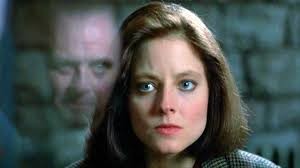Part of an ongoing effort to watch a set of films from non-White, non-U.S., non-male, and/or non-straight filmmakers and depart a little from the Western canon. The intro and full list can be found here.
Jean Cocteau rejected the label “Surrealist.”
Part of an ongoing effort to watch a set of films from non-White, non-U.S., non-male, and/or non-straight filmmakers and depart a little from the Western canon. The intro and full list can be found here.
Jean Cocteau rejected the label “Surrealist.”
Even if his early “body horror” films have now been canonized as classics (of a sort), and even if his more recent, less outre mainstream work has been often enthusiastically received, David Cronenberg has always been a divisive figure. This is more true of 2014’s Maps To The Stars than it has been in a while.
Part of an ongoing effort to watch a set of films from non-White, non-U.S., non-male, and/or non-straight filmmakers and depart a little from the Western canon. The intro and full list can be found here.
The first image we see is a still of bound hands and a woman’s face.
The sand seems to stretch forever under cloudless skies, and time is marked by routine – herding cattle, relaxing with family under the humble shelter of a lean-to style tent, discussing the future, drinking tea. Timbuktu’s first half hour or so is a slow, quiet portrait of desert life in Mali; if it’s not exactly paradise, what with the sand whipping around and garments covering faces to protect them from the elements, it’s not too far from it, either.
Back on the late, lamented film site The Dissolve, national treasure Nathan Rabin had an ongoing column called “You Might Also Like”, which used the various internet algorithms that recommend one movie on the basis of another to investigate whether one would, in fact, also like the second movie.
Trainwreck is Amy Schumer’s movie (a very good thing), but there’s no mistaking the influence of director Judd Apatow.
Almost without exception, Apatow’s “transgressive” comedies are, at their heart, deeply conservative. For all the naughty bits and ostentatious dancing around the line of decency, things are generally reconciled in the end in the name of family, monogamy, and the need for his man-children to grow up and take on responsibility in their lives.
Here are Greatest Movie Characters entries 11-20. First part is here. This is not a ranked list, and the ones below are entered in alphabetical order.
11) Clarice Starling (Silence of the Lambs)

Anthony Hopkins might get the acclaim for his delightfully twisted turn as Hannibal Lector in Jonathan Demme’s Silence of the Lambs, but it’s Jodie Foster’s Clarice Starling that makes it work.
The folks over at Flavorwire compiled a list of their 50 greatest movie characters, and it’s pretty solid. However, on the premise that one list is never as good as two lists (otherwise known as The Law Of The Internet), I composed my own.
It might seem odd to group The Homesman and The East together for consideration. The first is a solid but somewhat frustrating Western, with a feminist edge. The second is an embarassingly broad, largely contemptible genre picture about cartoonish, dumpster-diving eco-terrorists that consistently rings false.
The term “melodrama” gets a bad rap these days, implying artificially heightened emotions and stagy, contrived narratives, but few genres or tendencies have held such continuing appeal over time. In the silent era, these were more the norm than the exception, and Teinosuke Kinugasa‘s Crossroads (1928) shows this to be as true in Japan as anywhere else in the film-making world.
